Vegetarian ankake ramen is a popular dish in Japan. This type of ramen soup is made with soy sauce, mirin, and dashi broth. The soup is often served with a side of otsumami, a type of salty, umami-rich seaweed, which is used to flavor the noodles. In addition to soy sauce, ankake can be made with a variety of ingredients, including arrowroot, corn, and potato starch. You can also use tapioca starch.
Vegetarian Ankake Ramen Recipes
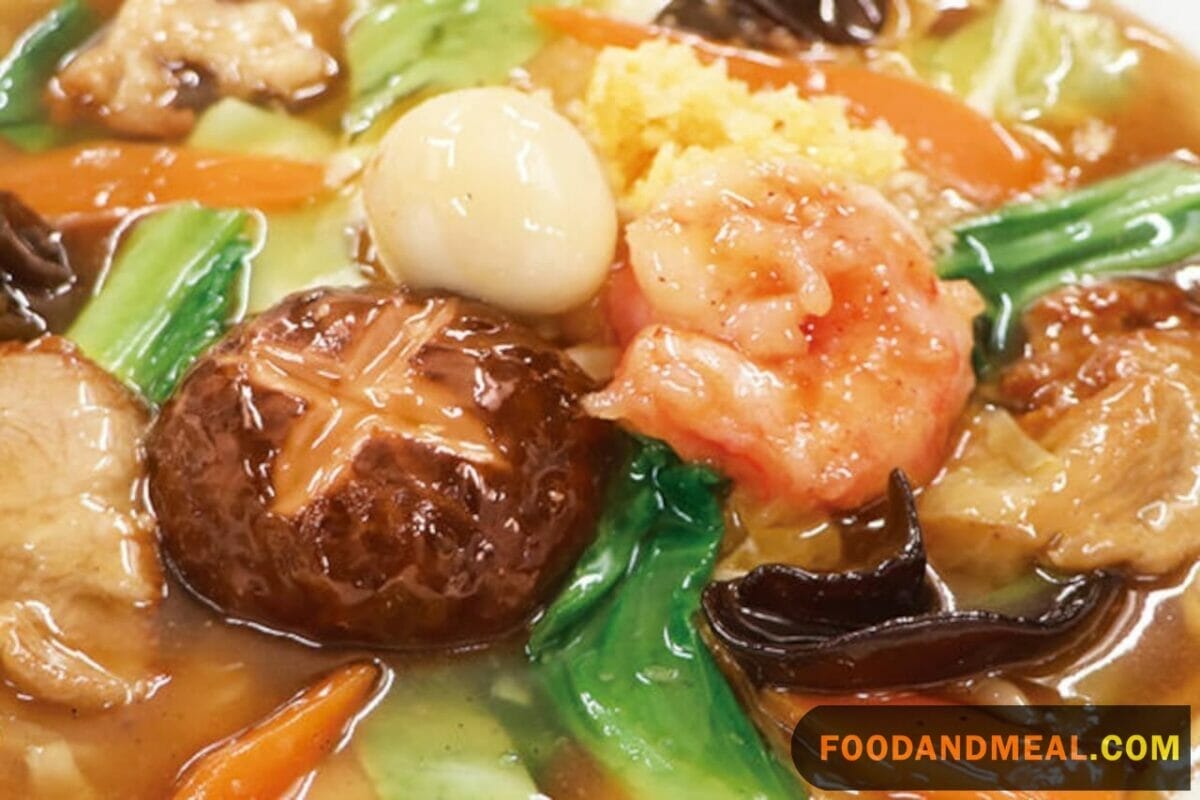
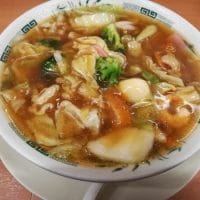
Vegetarian Ankake Ramen
Ingredients
- 5 cups Vegetarian Clear Soup
- 4 teaspoons cornstarch dissolved in ½ cup water
- ½ cup Vegetarian Shoyu Tare
- 1⅓ pounds noodles fresh,such as Chukasuimen
- 1⅓ cups Green Vegetable Topping
- 12 to 16 pieces Menma
- Negi
Instructions
- In a medium saucepan, combine the soup and cornstarch-water mixture. Mix well. Heat over low heat for 5 minutes to thicken the soup, stirring constantly.
- Add the shoyu tare to the soup and bring to a simmer over low heat.
- With all your ingredients ready to go, bring a large pot of water to a boil over medium-high heat.
- Heat your ramen bowls by filling them halfway with hot water. The bowls don’t need to be scalding, but they should be hot to the touch. Dump out the hot water and dry the bowls with some paper towels or a clean towel.
- Cook the noodles in the large pot of boiling water. Ramen that has been cut to a standard thickness (about 1 mm) will cook in 1 to 2 minutes.
- About 30 seconds before the noodles are finished cooking, ladle the soup into the ramen bowls.
- Drain the noodles, taking care to shake off as much excess water as you can. Carefully place some noodles in each bowl of soup, keeping them tidy.
- Place ⅓ cup of vegetables, 3 or 4 pieces of menma, and a sprinkle of negi neatly on the ramen. Serve immediately.
Video
Notes
- Ankake-style soups tend to hold heat much more than thin soups, so be careful when slurping this one. Eat fewer noodles per bite, and slurp with more energy. If you’ve ever burned the roof of your mouth on a slice of hot pizza, noodle burns are far worse.
- Soup: Mix equal parts unseasoned low-sodium vegetable broth and dashi broth. Japanese dashi powder to make broth can be found in the Asian foods section of many supermarkets or in Asian grocery stores or online. For a vegetarian version, find a dashi made from konbu and mushrooms.
- Noodles: Use 3 ounces of dried ramen noodles per bowl, preferably the thin, straight style.
Nutrition
© Food And Meal
This website provides approximate nutrition information for convenience and as a courtesy only. Nutrition data is gathered primarily from the Spoonacular Database, whenever available, or otherwise other online calculators.
Alternative Method: Vegetarian Ankake Ramen in a Slow Cooker
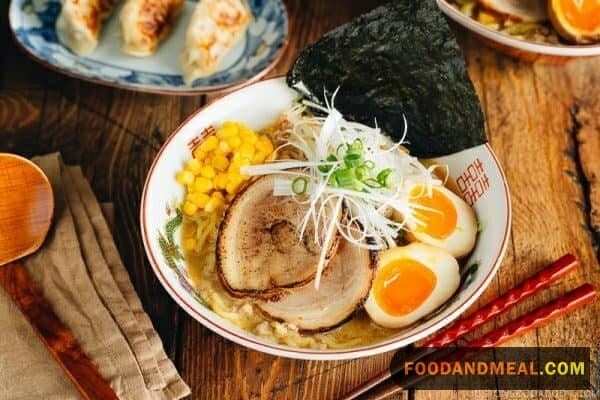
Ingredients:
- 8 cups vegetable broth
- 1/4 cup soy sauce
- 2 cloves garlic, minced
- 1 thumb-sized piece of ginger, sliced
- 1 cup sliced shiitake mushrooms
- 1 cup sliced carrots
- 1 cup sliced bell peppers (red and green)
- 1 cup sliced bok choy
- 1 cup sliced green onions
- 8 ounces ramen noodles
- 1 tablespoon cornstarch mixed with 2 tablespoons of water (slurry)
- Sesame oil and sesame seeds for garnish
- Optional: Tofu cubes or slices for extra protein
Instructions:
- Begin by combining the vegetable broth, soy sauce, minced garlic, and sliced ginger in the slow cooker.
- Add the sliced shiitake mushrooms, carrots, and bell peppers to the slow cooker. Set it to cook on low heat for 6-8 hours or high heat for 3-4 hours.
- About 30 minutes before serving, add the bok choy and green onions to the slow cooker. If you’re using tofu, add it at this stage as well.
- Cook the ramen noodles separately according to the package instructions. Drain and set aside.
- Once the slow cooker has done its magic and the vegetables are tender, add the cornstarch slurry to thicken the broth. Stir well and let it cook for an additional 10 minutes on high.
- To serve, place a portion of cooked ramen noodles in each bowl and ladle the hot Vegetarian Ankake broth over them.
- Garnish each bowl with a drizzle of sesame oil and a sprinkle of sesame seeds for added flavor and texture.
Tips for making Vegetarian Ankake Ramen
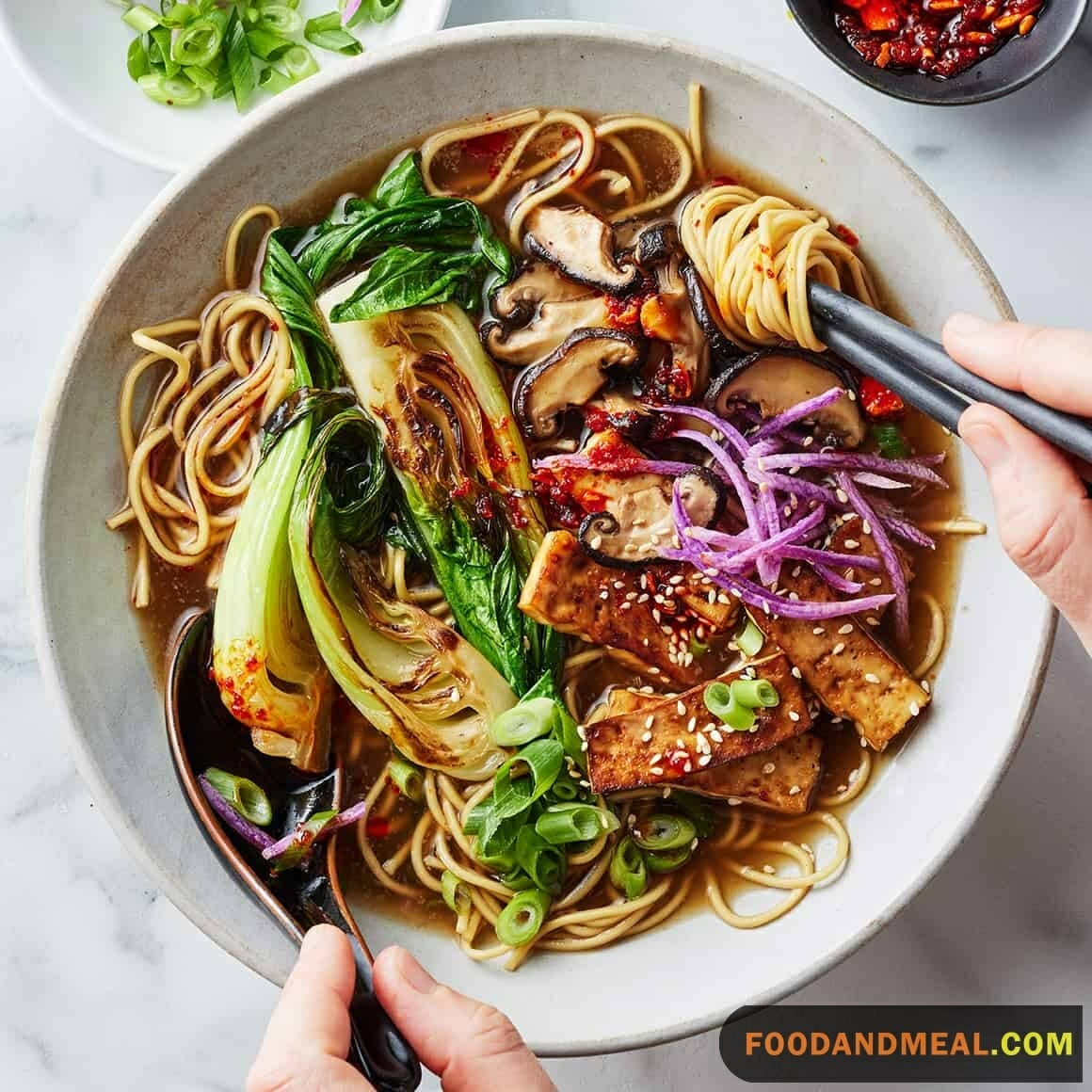
Serving Suggestions
Recommend Sides, Garnishes, and Beverages:
- Sesame Spinach Salad: A refreshing side salad with a sesame dressing pairs wonderfully with the rich flavors of Vegetarian Ankake Ramen.
- Crispy Gyoza: Serve some pan-fried or steamed gyoza (Japanese dumplings) on the side for a delightful contrast in textures.
- Japanese Green Tea: Enjoy the authenticity of Japanese cuisine by sipping on green tea alongside your ramen for a soothing experience.
- Kimchi: For a spicy kick, consider serving kimchi as a side dish to complement the umami richness of the ramen.
Different Ways to Serve:
- Traditional Bowl: Serve Vegetarian Ankake Ramen in deep bowls with chopsticks and a soup spoon for the classic ramen experience.
- Build-Your-Own Bar: Create a ramen bar with an array of toppings and condiments, allowing guests to customize their bowls.
- Ramen Salad: Transform leftovers into a cold ramen salad by chilling the noodles, adding fresh veggies, and tossing with a sesame dressing.
Cooking Tips
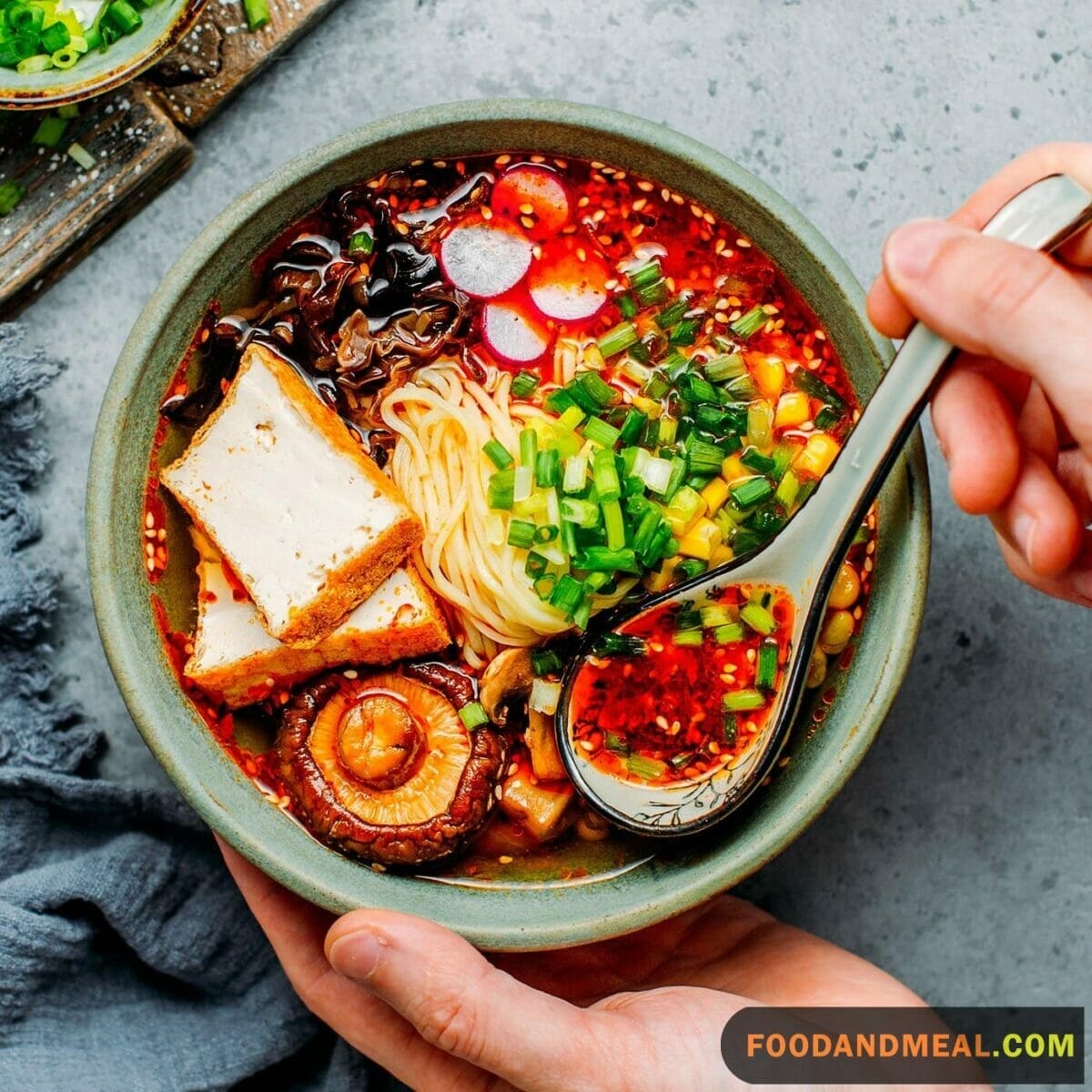
Tips and Tricks for the Best Results:
- Slow and Steady: Don’t rush the slow cooking process; it allows the flavors to meld and intensify.
- Adjust Seasoning: Taste and adjust the seasoning before serving, adding more soy sauce or a pinch of salt if needed.
- Perfect Noodle Texture: Cook the ramen noodles separately to maintain their ideal texture and prevent them from becoming mushy.
Common Mistakes to Avoid:
- Overloading the Slow Cooker: Avoid overcrowding the slow cooker with too many ingredients, which can result in uneven cooking.
- Last-Minute Thickening: Don’t add the cornstarch slurry too early; it’s best to do this about 30 minutes before serving.
- Neglecting Toppings: Don’t forget to garnish your ramen with sesame oil and sesame seeds for that final touch of flavor and presentation.
FAQs about Vegetarian Ankake Ramen
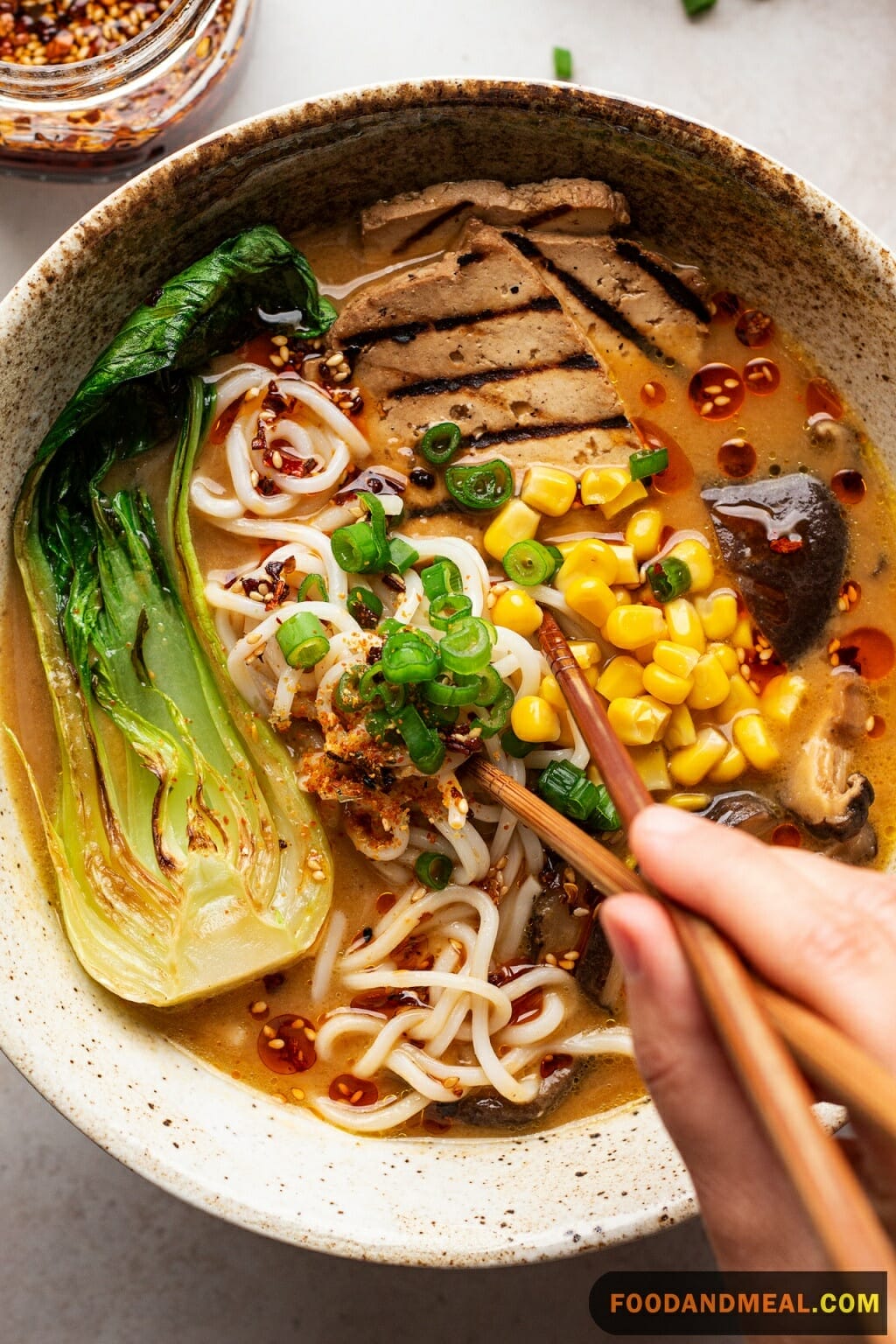
- Can I freeze leftover Vegetarian Ankake Ramen? While it’s possible to freeze the broth separately, it’s best to store leftovers in the refrigerator and reheat gently on the stove. Freshly cooked noodles are recommended for reheating.
- Can I make this dish gluten-free? Absolutely! Use gluten-free soy sauce and gluten-free ramen noodles to make this recipe gluten-free.
- How can I make this dish vegan? To make it vegan, omit the tofu or use a tofu alternative, and ensure you’re using vegetable broth instead of chicken or beef broth.
- Can I use other vegetables in this recipe? Yes, feel free to experiment with different vegetables based on your preferences. Bell peppers, spinach, and bean sprouts work well.
- What can I do with leftover broth? Leftover broth can be used as a base for other soups, stews, or even as a flavorful cooking liquid for grains like rice or quinoa. Store it in an airtight container in the refrigerator for up to a week.
Master the art of crafting Vegetarian Ankake Ramen with our expert recipe and tips. Share the love, savor the flavors, and subscribe for more culinary inspiration.
I'm James F Anderson, a noted sous chef from London and a Le Cordon Bleu alumnus. My career began in a Michelin-starred Parisian eatery, where my blend of classic and contemporary cooking, using seasonal ingredients, earned accolades. Recognized in culinary publications and on cooking shows, I’m committed to mentoring aspiring chefs and delivering memorable dining experiences, marking me as a standout talent in the culinary world.




